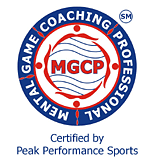THE PGTAA IN THE WALL STREET JOURNAL – APRIL 2005
Thinking about taking up golf? Here’s the bottom line on expenses
By RAYMUND FLANDEZ
WSJ – For beginners, one of the most daunting things about golf is the price tag. It’s tough to sort through the game’s specialized equipment and figure out how much all of it is going to cost. How many clubs do you need, and should you go for a basic bagful or shell out for top-of-the-line models? What’s the difference between a public and private course, and how much will it cost to get on the links?
Here’s a closer look at what you’ll need to get started in golf, and what you can expect to pay – whether you go the bargain route with generic clubs and public courses, or buy custom-fitted irons to use on private greens.
CLUBS
Golf’s basic piece of equipment presents a dizzying array of choices – and prices.
Many manufacturers offer a packaged set of inexpensive clubs for beginners. These sets retail for around $99 to $149. For that price, you’ll usually get woods, irons and a putter – 14 clubs in all, the same number the pros carry. Beyond the cheapest tier, clubs are marketed differently. Most manufacturers offer sets of eight irons, but you must buy the rest of the clubs a la carte.
Midprice sets can run $300 to $400, and the top of the line ranges as high as $2,000. Meanwhile, individual clubs range from $30 to $40 for the cheapest, $50 to $100 for midprice models and up to $600 for top-of-the-line, custom-fitted ones, according to Ken Morton Jr., vice president of the Association of Golf Merchandisers and director of marketing at Haggin Oaks Golf Complex, a municipal course in Sacramento, Calif.
The difference between the three price tiers comes down to quality and reliability. Cheaper clubs and midprice ones may not last as long as pricey pieces, and they don’t offer the technological enhancements that top-of-the-line models do. For example, expensive drivers have composite or graphite shafts that maintain good stability and lower the center of gravity. So you hit the ball with a straighter club face, and your shots will be less likely to go off target.
Which tier of club is right for you? Anne Lyndrup, director of player development for the National Golf Course Owners Association in Charleston, S.C., suggests starting out on the driving range by borrowing free “loaner” clubs from the golf facility. If you want to play on the course but don’t have the equipment, you can also rent clubs, which are newer than the “loaner” clubs, for about $25 a round. A bargain buying tip: Most courses sell these rental clubs at discounted prices at a certain point during the year to make way for the next season’s clubs.
Mr. Morton goes further, and suggests waiting to buy clubs until after you’ve taken some lessons so that you and your teacher can identify any irregularities in your swing – and then buy clubs to correct them. For instance, he uses an iron that has the club face built at a special angle and with a shaft about a half-inch over the standard length. “I have a tendency to hit a ball high to the right if I don’t have properly fitted equipment,” he says.
Many shops charge $50 for a custom fitting, but sometimes offer the service free on “demo days.” Larry Dorman, a spokesman for Callaway Golf, adds that the custom fitting often is deducted from your club purchase. The downside of customization? You usually can get a custom fitting only for midtier to expensive clubs, so you’re committing to a much higher price.
A caveat: You may not need a full set of 14 clubs at the start. Dana Garmany, chairman and chief executive of Troon Golf, a Scottsdale, Ariz., company that manages upscale golf courses, argues that beginners should go with eight to 12. Andy Silis, national sales manager of Tour Edge Golf of St. Charles, Ill., recommends that beginners get eight irons, a putter and a couple of woods. Depending on the price tier you choose, that could save you several hundred dollars.
Why cut back? Pros use a number of specialized clubs because they have a precise idea of how powerful their swings are, and they know that particular irons or wedges will allow them to hit the ball very specific distances. Beginners usually don’t have that kind of control over their shots.
BALLS AND ACCESSORIES
After selecting a club, you’ll need something to use it on. Generic balls go for $10 to $15 a dozen; they also come in packs of 15 and 18. The basic difference between these and higher-tech models is that they’re made of two pieces of material – the core and cover – instead of four. This creates a harder ball that can be tougher to control: Balls in this range are more likely to slide off the green and into the rough, rather than stay put for an easy putt.
Golfers like the softer, four-piece golf balls because they allow you to manipulate the spin more precisely, giving you more control. These balls tend to run about $30 to $40 a dozen. How can you be sure which type you’re getting? Check the packaging. Harder, cheaper balls have a “Surlyn” cover; softer, more costly balls have an “elastomer” cover.
You’ll also want to look into accessories at this point. Golf shoes, whose spikes give you a better grip on the turf, range from $60 a pair to more than $500 for top-of-the-line, all-leather models. For the dedicated, rainwear will cost $175 to $400, while umbrellas go for $10 to $50.
LESSONS
Before you start playing in earnest, you’ll need somebody to show you the ropes: the grip, the stance and how to drive, putt and chip, as well as golf lingo, etiquette and the layout of a facility.
Individual training sessions with a pro usually run $40 to $100 for a half-hour, depending on the quality of the pro and the state of the local market. (You can often find a set of 10 lessons for $250 to $450.) Golf clinics for beginners – typically with one pro and about seven students – can be had for $125 per student, once a week for four weeks, with lessons that last for about an hour and a half.
The best bet for finding a teacher who’s worth the money: word-of-mouth. Barry Lotz, president of the Professional Golf Teachers Association of America, advises asking friends for recommendations, or going to golf retailers in the area; one name should start popping up frequently. Also, ask your prospective teacher if you could talk to some former students. If the teacher refuses, don’t take the lessons.
For those seeking free lessons, golf pros often give free instruction in May as part of an awareness campaign sponsored by the Professional Golfers’ Association of America. You can find a local pro at PGA.com or PlayGolfAmerica.com.
COURSES
Next you’ll want to find a place to play. Courses vary widely in terms of quality and offerings. Private courses, which require membership, generally feature lots of amenities, such as swimming pools and tennis courts, and tend to have better course conditions and maintenance. Public courses, where anyone can play for a daily fee, generally have fewer extras, and golfers can face six-hour rounds because of the crowds. There are also some options in between public and private courses.
Public courses can save you a lot of money. The median weekend price at an 18-hole public course is $34, including cart to drive and greens fee, the National Golf Foundation says – though certain high-fee or resort courses can run into the hundreds of dollars.
But those fees offer some wiggle room. For one thing, most courses vary their prices according to time of the week and time of day. So consider skipping Saturday mornings, when demand – and the cost – is typically highest. For instance, Canyon Springs Golf Club, a public course in San Antonio, charges $74.95 during prime tee times. But you can pay about half that if you start after 1 p.m. on a weekday. Most courses offer a similar discount. (Courses are usually open seven days a week, 7 a.m. till dusk.)
If you’re bargain hunting, you might also join a local or national golf organization, says Pam Swensen, vice president of sales and marketing for the Executive Women’s Golf Association in Palm Beach Gardens, Fla. The EWGA, for instance, partners with about 260 golf courses, which offer the group’s members 10 percent to 15 percent off greens fees. The EWGA has an annual membership fee of $100; fees vary widely at other groups. There’s no central directory of these organizations, but individual groups are easy to find online.
Another option is membership at a public course, some of which offer such packages. Most recreational golfers prefer the pay-as-you-go method, but if you know you’re going to play at least once a week, a membership could save you lots of money.
Let’s say you play golf once a week at Canyon Springs. If you pay a $74.95 greens fee every time, you would end up shelling out $3,897.40 for a year. But with a membership of $2,995, or $275 a month, you could shave almost $900 off that amount. (For a family membership, the cost is $3,495, or $317 a month.) Joe Munsch, president and chief executive officer of Evergreen Alliance Golf Ltd., says annual memberships at the 27 public courses the company manages usually start at an average of $1,800.
Memberships at private clubs can run much higher, depending on the cachet and quality of the course and the kinds of perks it offers, such as top-notch food and beverage service. Some extremely exclusive courses, such as Augusta National Golf Club’s men-only membership, are invitation only.
When you join a private club, you’ll usually have to pay an initiation fee, which can range anywhere from $1,000 to $500,000. According to the Club Managers Association of America, in a survey of 3,000 members, the average initiation fee for a regular or full member in 2004 was $59,880. Monthly dues were $486.
Clearly, you would have to play a lot of golf to make up for the initiation fee. But you’d get a locker with your name on it – and really fluffy towels.

